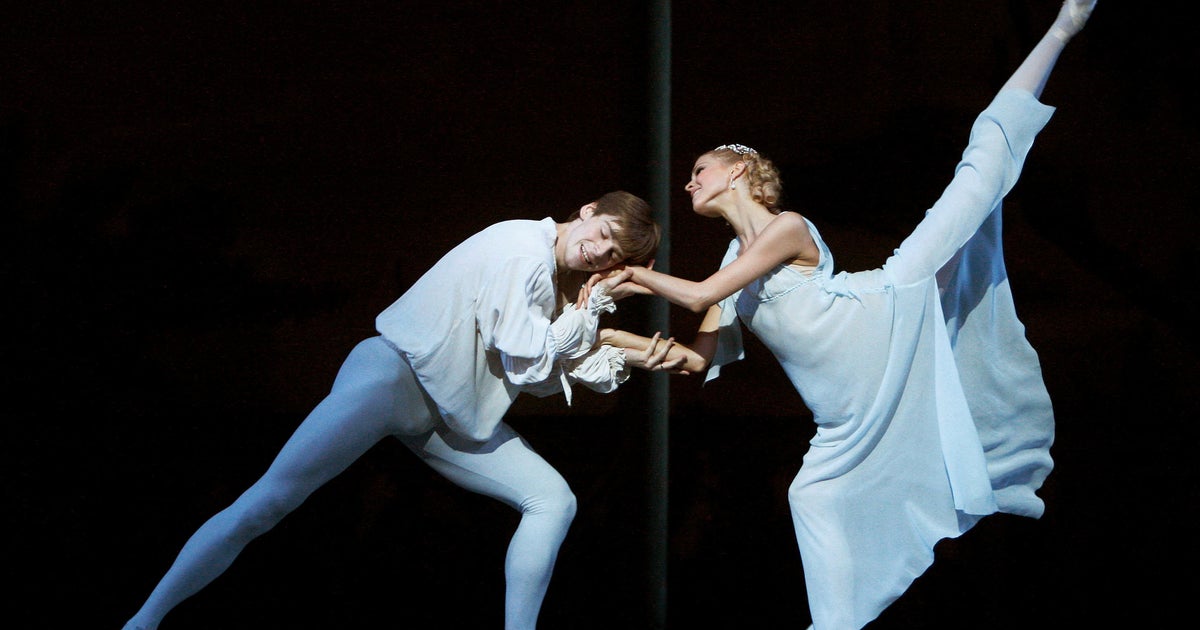Ballet: A theater of the war in Ukraine
When Olga Smirnova in March quit Moscow's famed Bolshoi Ballet in protest of Russia's invasion of Ukraine, the prima ballerina's decision shook the ballet world. Russian dance critic Leila Guchmazova told the New York Times it was as though "a bomb" had been detonated in the Russian ballet world.
So opened the cultural front of Vladimir Putin's war in Ukraine.
The shockwaves over Smirnova's departure, not only from the ballet company but also from the country, are, in part, because of the outsized role the Bolshoi plays in Russian culture. Physically near the Kremlin, it is inextricably aligned with the Russian government. Tsars loved the Bolshoi, and Communist leaders held rallies and gave addresses at the Bolshoi theater. Amid his military campaign in Ukraine, Putin held a press conference in March to discuss the future of the Bolshoi.
Olga Smirnova had danced as one of two principal soloists at the Bolshoi since 2016. After her departure, which she announced on the social media platform Telegram, she joined the Dutch National Ballet.
In an interview with 60 Minutes correspondent Jon Wertheim, Smirnova said Moscow's invasion of Ukraine was a moment she could not ignore
"In one way I didn't have a choice," she said. "For me, it was pretty much clear."
Smirnova is not the only dancer to have relocated because of the conflict. Searching for safety and a path to continue their dreams, more than 100 young Ukrainian dancers have left their homeland and since been placed in ballet schools across Europe. The effort is coordinated by Larissa Saveliev, a former Bolshoi dancer, who founded Youth America Grand Prix, a ballet competition and scholarship program that pairs aspiring dancers with ballet schools worldwide.
Jon Wertheim met five of the young Ukrainian ballet dancers who have been welcomed at The National Ballet Academy of Amsterdam. Among them is a girl named Katya, who turned 18 years old on February 24, the day the invasion began. She told Wertheim that, when she awoke that morning to a flurry of messages on her phone, she had assumed they were to celebrate her birthday.
Instead, she and her family took cover in a fallout shelter, where she continued to practice ballet.
This need to keep dancing is something each dancer shared as they recalled their reaction to Russia's invasion. Now safe in Amsterdam, they told Wertheim that the physical demands of pliés and pirouettes offer a means of mental escape from the realities of war at home.
"When I dance, I turn off my brain," said a young dancer named Maria. "I only think about movement, about myself, and don't think about what happens in Ukraine."
When the music stops and the teens leave the studio, they see Ukrainian flags flying around Amsterdam, a reminder of home, as well as the support they've been offered in their new adopted country. For Ted Brandsen, the artistic director of the Dutch National Ballet who brought Olga Smirnova into his company, this solidarity shows that art will eventually triumph.
"Dancers will go on. Choreographers will go on. The work will continue," Brandsen said. "Theaters, ballet companies, they have survived worse. They have survived famines, revolutions, two World Wars. I think they will survive this."
The video above was originally published on May 8, 2022 and was produced by Brit McCandless Farmer. It was edited by Will Croxton.



